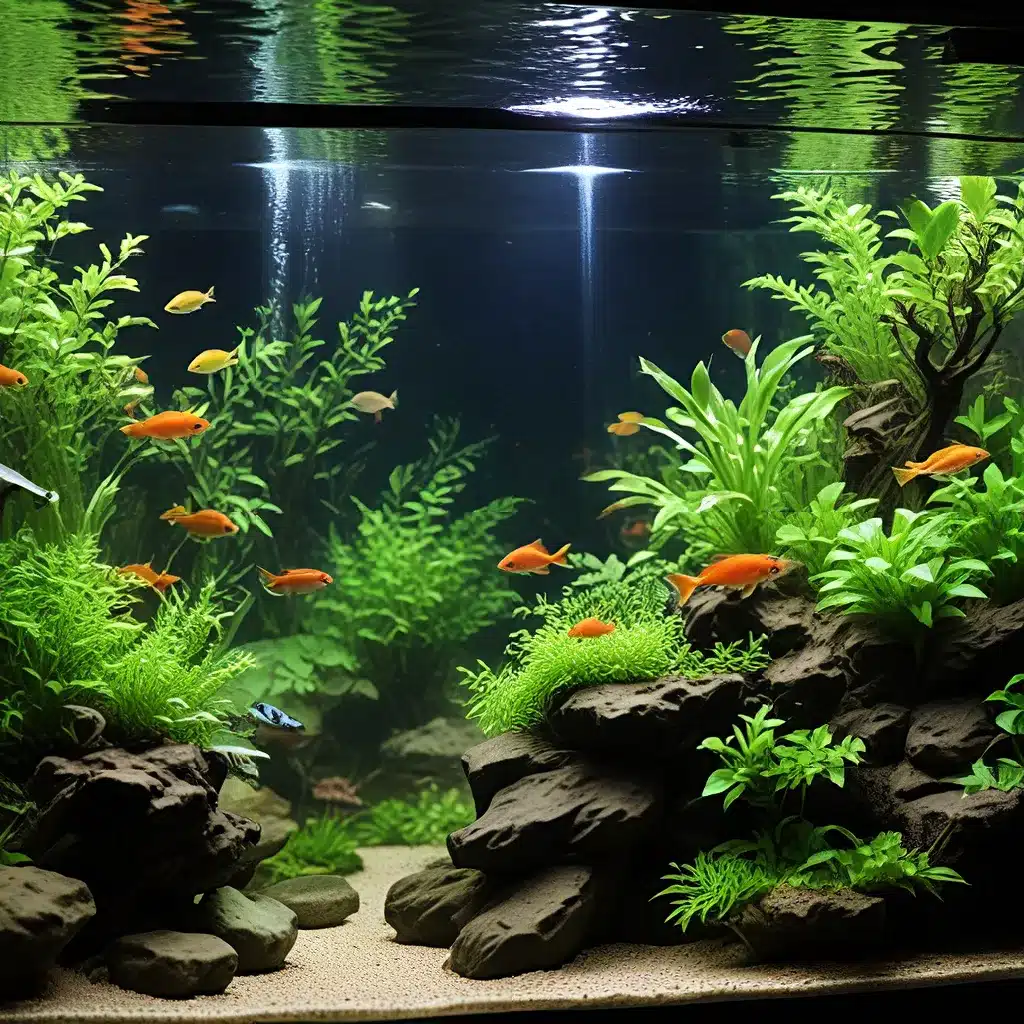
Maintaining a Balanced Aquarium Ecosystem
Achieving a thriving aquarium ecosystem requires a delicate balance of various factors, including water quality, filtration, and aquascaping. As an aquarium enthusiast, it’s essential to establish a consistent maintenance routine to ensure the long-term health and well-being of your aquatic inhabitants. In this comprehensive guide, we’ll explore the key elements of aquarium maintenance, from water management to species-specific care, to help you create a captivating and sustainable underwater oasis.
Mastering Water Quality and Filtration
Maintaining proper water parameters is crucial for the success of any aquarium. Regular testing and adjustments to parameters like pH, ammonia, nitrite, and nitrate levels are essential to providing a stable and conducive environment for your fish and plants. King Aquarium recommends investing in a high-quality test kit and monitoring these levels on a weekly basis.
Effective filtration is the backbone of a healthy aquarium. Mechanical, biological, and chemical filtration work together to remove waste, control algae growth, and maintain water clarity. Properly maintaining filter media, replacing it as needed, and ensuring adequate water flow are all critical steps in sustaining a thriving ecosystem. Consider incorporating innovative filter technologies, such as hang-on-back (HOB) or canister filters, to streamline your maintenance routine.
Aquascaping for a Natural-Looking Environment
The visual appeal and overall health of your aquarium are greatly influenced by the way you design and maintain the aquascape. Mimicking natural habitats by incorporating live rock formations, driftwood, and a variety of aquatic plants can create a stunning and harmonious environment. Carefully selecting and positioning these elements can provide ample hiding places, grazing areas, and visual interest for your fish.
When planning your aquascape, consider the specific needs and behaviors of the fish species you intend to keep. For example, some fish prefer more open swimming spaces, while others thrive in densely planted areas. Striking the right balance between these elements will ensure your aquarium is not only visually appealing but also conducive to the long-term wellbeing of your inhabitants.
Feeding and Nutrition for Healthy Fish
Proper feeding and nutrition are essential for the growth, coloration, and overall health of your aquarium inhabitants. Tang fish, for instance, are primarily herbivorous and require a diet rich in marine algae and plant matter. Providing a varied and balanced diet, including both commercial foods and supplemental live or frozen foods, can help ensure your fish receive the necessary nutrients.
Be mindful of overfeeding, as this can lead to water quality issues and poor fish health. Stick to a consistent feeding schedule and monitor your fish’s appetite and body condition to ensure they are receiving the right amount of nutrition. Troubleshooting common feeding issues, such as fish refusing food or displaying signs of nutritional deficiencies, can help you make informed adjustments to your feeding regimen.
Routine Maintenance and Cleaning
Regular maintenance and cleaning are the cornerstones of a thriving aquarium ecosystem. Adhering to a consistent schedule for tasks such as partial water changes, filter maintenance, glass cleaning, and debris removal can help prevent the buildup of waste and maintain optimal water conditions.
Carefully plan and execute your maintenance routine to minimize disruption to your aquarium inhabitants. Utilize specialized tools like magnetic algae scrapers and gravel vacuums to streamline the cleaning process and maintain a visually appealing environment. Staying on top of these routine tasks can significantly reduce the likelihood of water quality issues or disease outbreaks.
Addressing Health Concerns and Preventative Measures
Despite your best efforts, aquarium inhabitants may occasionally face health challenges. Familiarizing yourself with common fish diseases, their symptoms, and appropriate treatment methods can help you respond quickly and effectively to any issues that arise.
Implementing preventative measures, such as maintaining a clean and stable environment, can go a long way in preserving the health and longevity of your fish. Regular water testing, quarantining new additions, and closely monitoring for signs of stress or illness can all contribute to a proactive approach to disease management.
Achieving a Harmonious and Thriving Aquarium
By adopting a comprehensive maintenance routine that addresses water quality, filtration, aquascaping, feeding, and health concerns, you can create a vibrant and sustainable aquarium ecosystem. Consistent attention to detail, a willingness to adapt to your aquarium’s needs, and a passion for aquatic life will all contribute to the long-term success of your underwater oasis.
Remember, the key to a healthy and thriving aquarium lies in understanding the natural habitat and behavioral requirements of your chosen fish species, while also leveraging the latest advancements in aquarium technology and techniques. With the right approach, you can transform your aquarium into a captivating and low-maintenance showcase of nature’s wonders.

